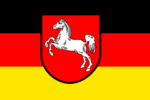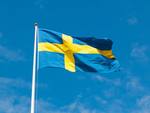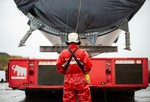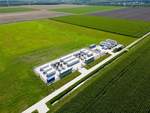04/26/2005
Ghana has 2,000 megawatt wind power – Energy Commission of Ghana
The Energy Commission (EC) of Ghana said the country has a total wind power potential of 2,000 megawatt of power that could be tapped into the national grid for use in the rural areas. Mr Kwabena Otu-Danquah of the Energy Commission was, however, quick to add that Ghana lacked the right legal regime and policy direction to facilitate a comprehensive mix of wind and solar energy use. He said, according to the US-based National Renewable Energy Laboratory (NREL) and the EC satellite data on Ghana, there was immense potential at Nkwanta near the Ghana-Togo border, the Coastal area in the Accra Plains, especially east of the Meridian, the Kwahu and Gambaga mountains. Briefing participants at a seminar on the Solar and Wind Energy Resources Assessment (SWERA) Project, Mr Otu-Danquah said the wind map indicated that the Ghana-Togo border has a wind power potential of 9.0 meters per second while the Accra Plains has between 5.5 to 6.5 meters per second and the Kwahu and Gambaga mountains also held 5.5 to 6.5 meters per second.
The SWERA Project is a United Nation's Environment Project Global Environmnenr Facility aimed at promoting the utilization of renewable forms of solar and wind energy. It is to remove barriers created by the lack of information and supporting more informed decision-making, science and technology based policy that would ultimately increase investors' interest in renewable energy. Explaining the monthly mean wind speed, Mr Otu-Danquah said the wind speed at the Pute site in the Northern Region is above 5.0 meters per second throughout the year while the Ada site in the Greater-Accra Region for eight months in a year was above 5 meters per second. The mean speed in Lolonya, on the Ada-Battor road in nine months during the year was also above 5.0 meters per second. "Indeed, there are wind speeds of over 5 meters per second blow for period of between 10 hours and 16 hours per day at the three sites," Mr Otu-Daquah added.
Mr Otu-Daquah told the Ghana News Agency that SWERA under the project is helping to assess the overall potential for renewable energy and creating reliable information, and developing information tools for energy planners and project developers, including regional and national maps of solar and wind energy resources. It is also developing a geographical information system interface. The Project, which started in September 2002 is being funded by an 80,000-dollar grant from the UNEP would end next year. Under the project, comprehensive data on solar and wind resources have been compiled including direct, diffuse, global and latitude tilt solar data from satellite data at 10-kilometre resolution. Mr Otu-Danquah said global solar resource irradiation was high throughout the country ranging from 4.5 to 6.5 kilowatt per meter per day with a general latitude tilt irradiation equal to global irradiation. He said direct irradiation is however, low throughout the country but relatively high in the Northern Region with diffuse irradiation high over the entire country.
Explaining the solar resource, Mr Otu-Danquah also told the GNA business desk that with low direct radiation, solar energy technologies that utilize direct radiation to produce energy would not perform well in the country. "Such technologies are solar thermal systems like concentrators for electricity production, adding that in the North Western corner of the country where direct radiation is the highest, solar concentrators will operate for a maximum period of four months a year. "All solar energy technologies that use global radiation to produce energy such as PVC's and water heaters would operate efficiently throughout the year in any part of the country."
The SWERA Project is a United Nation's Environment Project Global Environmnenr Facility aimed at promoting the utilization of renewable forms of solar and wind energy. It is to remove barriers created by the lack of information and supporting more informed decision-making, science and technology based policy that would ultimately increase investors' interest in renewable energy. Explaining the monthly mean wind speed, Mr Otu-Danquah said the wind speed at the Pute site in the Northern Region is above 5.0 meters per second throughout the year while the Ada site in the Greater-Accra Region for eight months in a year was above 5 meters per second. The mean speed in Lolonya, on the Ada-Battor road in nine months during the year was also above 5.0 meters per second. "Indeed, there are wind speeds of over 5 meters per second blow for period of between 10 hours and 16 hours per day at the three sites," Mr Otu-Daquah added.
Mr Otu-Daquah told the Ghana News Agency that SWERA under the project is helping to assess the overall potential for renewable energy and creating reliable information, and developing information tools for energy planners and project developers, including regional and national maps of solar and wind energy resources. It is also developing a geographical information system interface. The Project, which started in September 2002 is being funded by an 80,000-dollar grant from the UNEP would end next year. Under the project, comprehensive data on solar and wind resources have been compiled including direct, diffuse, global and latitude tilt solar data from satellite data at 10-kilometre resolution. Mr Otu-Danquah said global solar resource irradiation was high throughout the country ranging from 4.5 to 6.5 kilowatt per meter per day with a general latitude tilt irradiation equal to global irradiation. He said direct irradiation is however, low throughout the country but relatively high in the Northern Region with diffuse irradiation high over the entire country.
Explaining the solar resource, Mr Otu-Danquah also told the GNA business desk that with low direct radiation, solar energy technologies that utilize direct radiation to produce energy would not perform well in the country. "Such technologies are solar thermal systems like concentrators for electricity production, adding that in the North Western corner of the country where direct radiation is the highest, solar concentrators will operate for a maximum period of four months a year. "All solar energy technologies that use global radiation to produce energy such as PVC's and water heaters would operate efficiently throughout the year in any part of the country."
- Source:
- Online Editorial www.windfair.net
- Author:
- Trevor Sievert, Online Editorial Journalist
- Email:
- press@windfair.net
- Keywords:
- Ghana, EC, wind energy, wind power, solar energy, hydrogen energy, renewable energy, wind turbine, wind farm, rotorblade, onshore, offshore









